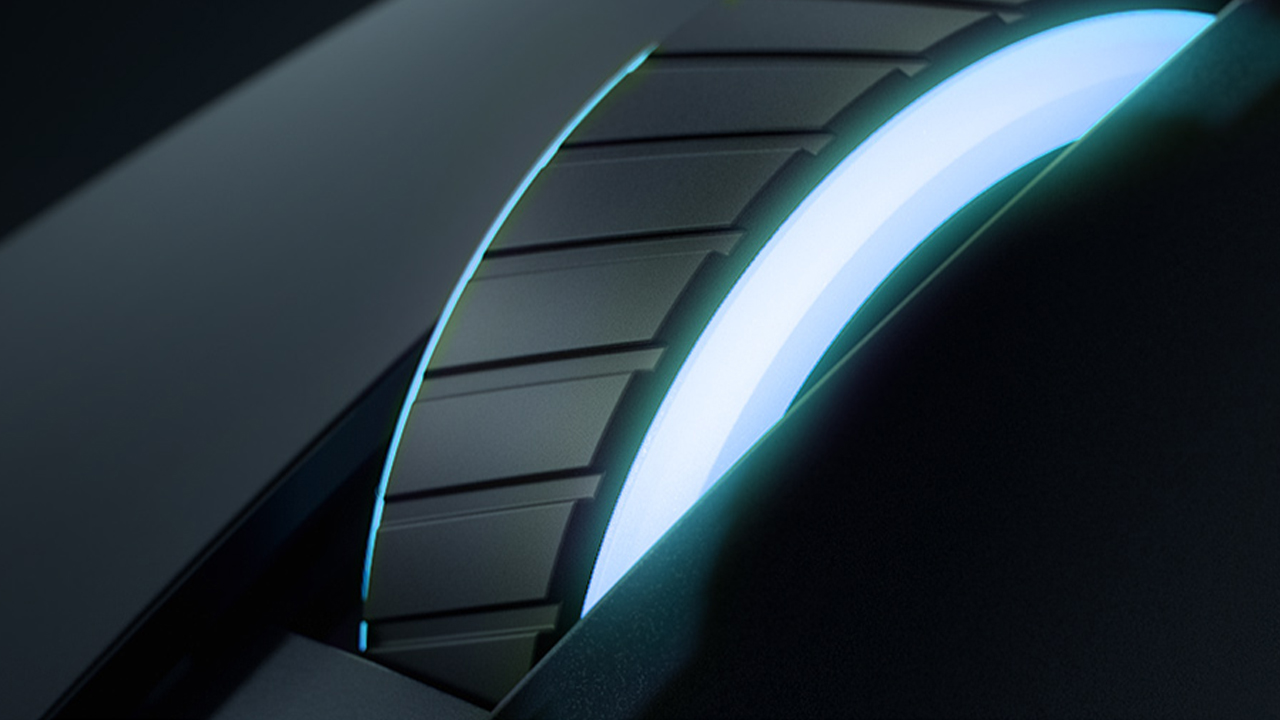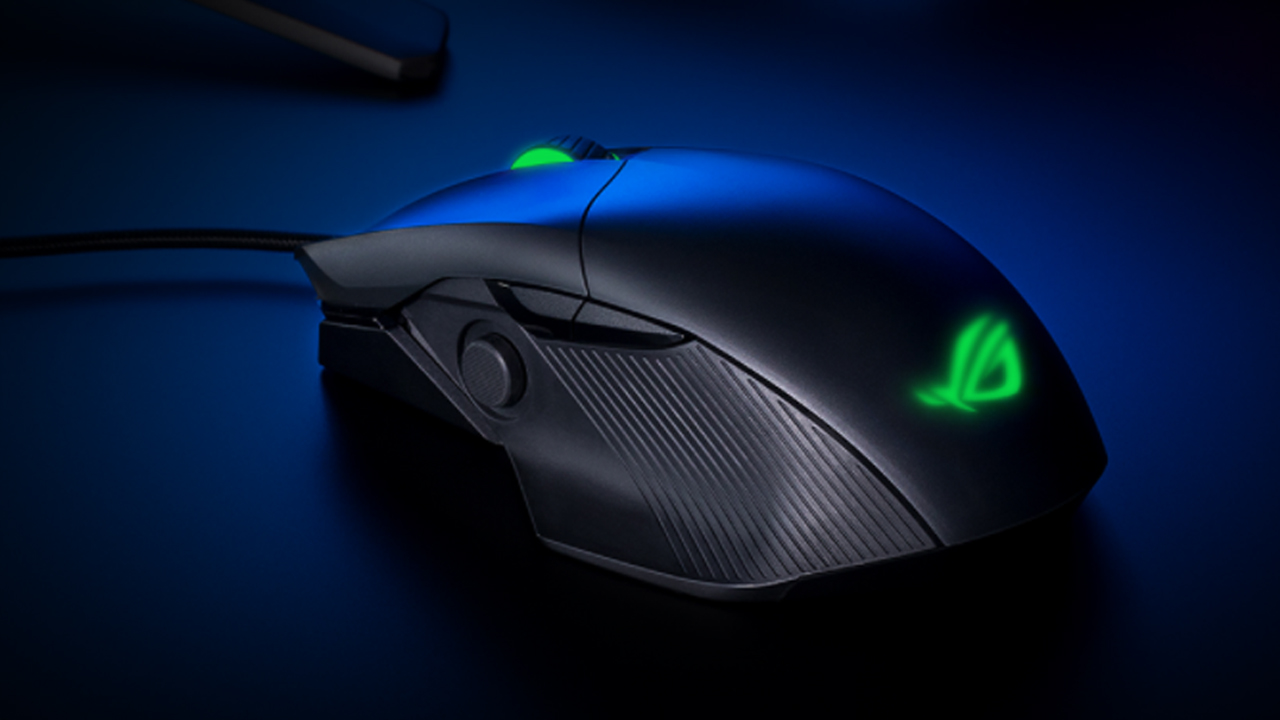GamesRadar+ Verdict
A solid, affordable refinement of the Chakram’s first outing.
Pros
- +
Push-socket switches
- +
Comfy, ergonomic design
- +
Significantly cheaper than the original Chakram
Cons
- -
DPI button isn’t very accessible
- -
Thumbstick is still a niche feature
- -
No use to lefties
Why you can trust GamesRadar+
As is tradition, Asus have followed the release of their ROG Chakram mouse with the ROG Chakram Core edition, which strips back some of the features in exchange for a cheaper price point. And it is significantly cheaper than its predecessor; roughly $60 / £60, to be exact.
However, the design will be instantly familiar to anyone who has already handled the original Chakram. In addition to the two main mouse buttons and scroll wheel, there are two thumb buttons and a tiny flat ‘joystick’ above a thumb rest with a textured plastic surface. On initial inspection, we like the ROG Chakram Core just as much as the original.
Features

Price: $79.99 / £89.99
Form factor: Right-handed
Buttons: 5 + 4 (digital joystick mode)
DPI: 16,000
IPS: Up to 400
Switches: Omron
Connectivity: Wired
Weight: 3.4oz - 3.9oz (97g - 111g) with adjustable weights
The thumbstick is obviously the main attraction here, and it’s largely unchanged from the previous iteration. To recap, it’s a flat sliding ‘nub’ that can be used for analogue stick-style input or as four extra buttons using directional digital input. It comes with an alternative head should you wish to adjust the size, as well as a plastic cap cover that effectively removes it from the mouse.
Another returning feature here is the push-socket switch housing under the two main mouse buttons, which allows you to easily remove and replace the switches should they become damaged (or if you want to install custom switches of your own).
The optical sensor in the Chakram Core is a powerful PixArt gaming sensor, with up to 16,000 DPI and a max acceleration of 40g. There’s no change in baseline performance here from the original model though, despite the significant price difference.
The key aspect of the first Chakram that isn’t making a return in the Core is tri-mode connectivity. While the original mouse could connect over USB cable, Bluetooth, or 2.4GHz dongle, the Chakram Core is wired-only via a non-detachable USB-A cable. This cable is braided and feels high-quality, however, and Asus have wisely used the dongle storage space in the original design for a removable 13.6g weight that alters the handling of the mouse somewhat.
Design
The ROG Chakram Core is a bit muted compared to its predecessor, removing the RGB lighting strip beneath the front buttons but keeping the light-up scroll wheel and ROG logo. It has the same translucent plastic shell and comfortable thumb rest as well, with a textured finish for better grip during those Heated Gamer Moments.

The casing can be quite easily pulled apart for maintenance, cleaning, or simple curiosity. Most of the outer case is held in place magnetically, but there’s little to no risk of any parts coming loose during use. The shell and button covers snap back into place quite satisfyingly, and the overall construction feels very durable, on par with the original Chakram despite the lower price.
While there is a dedicated button for switching between DPI profiles, it’s located on the underside of the mouse, making it inaccessible during regular use. It’s a bit of a shame, but isn’t going to be a huge issue for most users.
Performance
The Chakram Core feels great to use, its ergonomic design really shining in periods of extended use. The thumb rest works great as well, and even if you don’t cover up the thumbstick with the little plastic panel, it’s too small to be intrusive.

The sensitivity feels nice and snappy, meanwhile, and the braided cable ensures minimal ‘stick’ when moving over a variety of desk surfaces. The cable does make this mouse a little heavier than the original Chakram, but the added weight isn’t that noticeable.
Our concern with the ROG Chakram Core is the same, though; the analog thumbstick is a somewhat limited and very niche addition to a generally solid gaming mouse. While it can be useful in certain genres (like spaceflight sims) and is arguably the best gaming mouse for that sort of thing, it’s difficult to use practically in the vast majority of games. The digital mode allows it to function as four buttons instead using quad-directional inputs, but we’d rather just have the extra buttons.
Overall - should you buy it?
If you liked the sound of the original Chakram, get the ROG Chakram Core. It’s essentially the same product, only a lot cheaper and a tad less flashy. If you already bought yourself a Chakram, there’s nothing new to see here—go enjoy your wireless connectivity.
In essence, this is a good all-rounder gaming mouse with a fun gimmick slapped on the side. The thumbstick will likely prove invaluable to a very small handful of gamers, but it’s such a niche feature that we can’t really see it taking off. It’s also utterly useless to anyone who uses their mouse left-handed, too. But that doesn’t matter; we really like the ROG Chakram Core, even if it is the weirdo of our gaming mouse collection.
Christian is a writer for Maximum PC, but also writes in a freelance capacity for a number of other sites including GamesRadar, PC Gamer, and TechRadar. He knows the PC gaming space inside out, particularly when it comes to hardware including PC builds, keyboards, and other peripherals.



